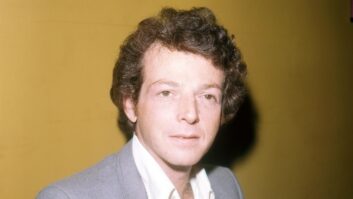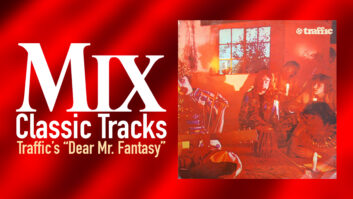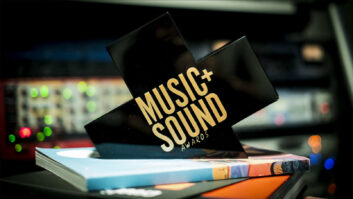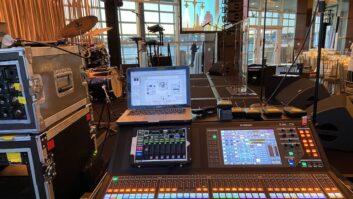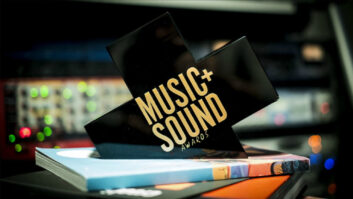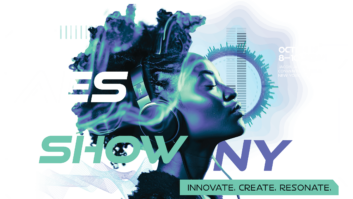In this day and age of DAWs and mouse control, it’s amazing how out of touch I have become with good old-fashioned fader mixing. Yet both in my studio and with my mobile rig, I always have them right in front of me. With that in mind, I’ve gotten these “flying fingers” moving and have had a few revelations along the way.
I consider myself lucky to have grown up in the business right as computer recording and DAWs were finding their way. I went from a Tascam Porta 05 analog cassette recorder right into the breakthrough world of Tascam DA-88s, DA-38s and ADATs. Reverbs were sparse in my studio, and I remember how thrilled I was to move from the Alesis Microverb to the Lexicon LXP-1 and LXP-5 with remote!
Out of the back of all of these units, I fed a variety of Mackie consoles. First, it was the breakthrough 1604, and later a full 3208 desk with 32 faders and 8 aux faders. My point is, there was no automation in my world yet. I got used to moving faders and making the mix happen in real time. If you wanted something louder or softer, you did it yourself as the mix progressed (or, hopefully, you could explain dynamics to the musicians).
Next, along came Digidesign Sound Tools, which begat Pro Tools. A wonderful girlfriend whom I’m still close to lent me $16,000 to buy 16 channels of Pro Tools, and I never looked back (and yes, I paid her back in full). But that got me used to the world of mouse mixing; after that, I often found consoles frustratingly slow, even ones with automation. I was all about instantaneous and full recall as well as the ability to work quickly and fluidly.
In the earliest days of Pro Tools, software reverbs were rare and just being developed, so I would run a hybrid rig into the consoles and out to my Lexicon PCM80, PCM90, Yamaha SPX90 and then into the world of Lexicon 480s and TC Electronic Reverb 6000s. But they all would have to be reset every time you wanted to do a recall, so mixing was a hybrid approach—part in the box and part out—running through whatever console was available, and then, most times, right back into Pro Tools. While it was often slow and tedious, it could be fun and more musical. To this day, one of my favorite records that I’ve done was Al Di Meola’s Winter Nights, where myself, Al and Hernan Romero sat at his Soundcraft desk and all three of us made moves in real time. It was fun, fluid and musical. If we didn’t get it right, we did it again until we did.
Eventually, so many good reverbs were developed for Pro Tools that I was able to lose all my outboard gear and just stay in the box. And I found myself mixing with a mouse a few channels at a time. Was it optimal? Maybe not, but boy, I was good at it. It was second nature to me.
Over the past few years, I’ve had a Command 8 right in front of me on my home Pro Tools HDX system. Mostly, I used it for transport controls and a few mutes with the occasional fader move. So not long ago, I got a nice eye infection and I literally couldn’t see the screen clearly. I was like, “Well, now what am I going to do?” And there were the faders right in front of me.
So I took the mix, pulled down every fader, and I started from scratch. What a crazy, refreshing and incredibly satisfying way to work! I remembered the good old days of getting the drums and bass balanced first, then bringing in the guitars so the rhythm section had a cohesive sound. Then I added whatever else, be it vocals, keys, strings, etc.
Since I do a lot of crime music composing for TV, I’ve gone back to breaking down the mix to its core, and using faders to creep in the cellos, string pads and percussion effects. I’ve been really enjoying the moment I can get moving a few faders at once, even something as simple as splitting stereo keyboard pads into split mono and ebbing and flowing each side, almost like live fader tremolo. For a more traditional record, I’ve been mixing with vocals, pushing and pulling the voice and the backgrounds to give it more flow. What a blast.
With my mobile rig, I’ve been doing the same thing. I use my PreSonus FaderPort 8 not only for its transport and recording controls, but the faders themselves as I’m tracking. One of the beautiful things about Pro Tools is that all of the moves I make on the mobile session with the FaderPort automatically recall on my home system, and it’s just a matter of putting the polishing touches on everything and printing that master.
With the AES Convention in New York City this week, I’m excited to hit the show with the intention of checking out how I’m going to replace my Command 8, now that I’ve rediscovered fader mixing. It will be fun to walk the exhibition floor knowing that I have a mission: to push my home studio to the next level. And thanks to an eye infection, I’ve rediscovered my “flying fingers”—and I love it.
How do you prefer to mix—mousing it all the way or grabbing those faders? Share your thoughts in the comments below!

